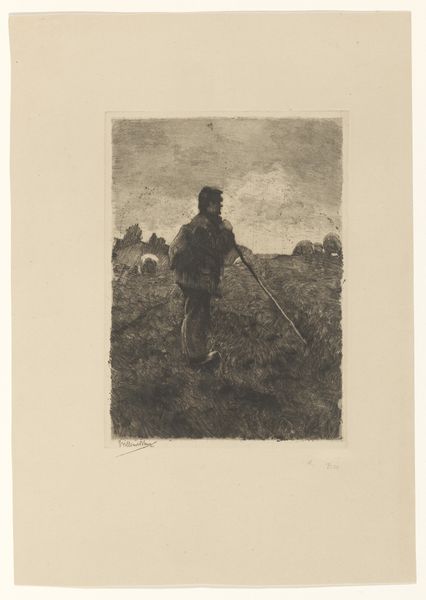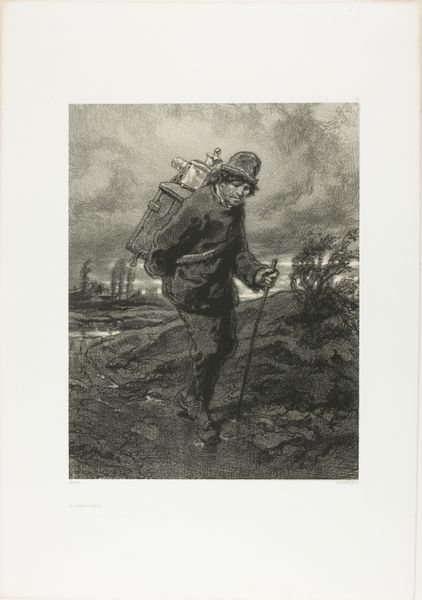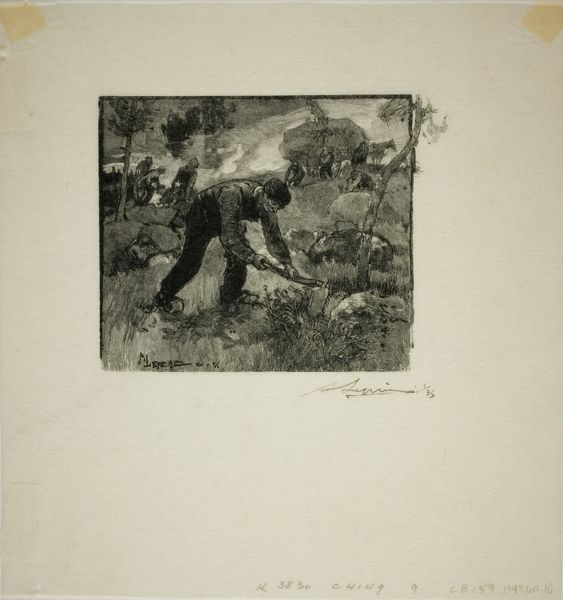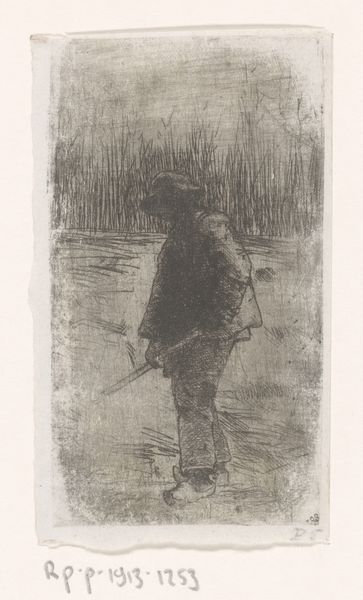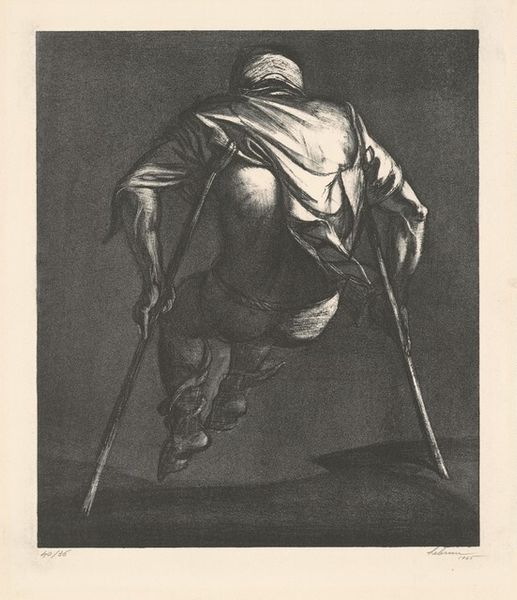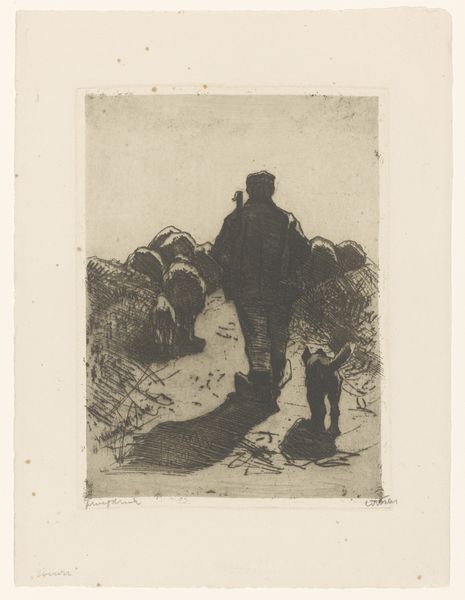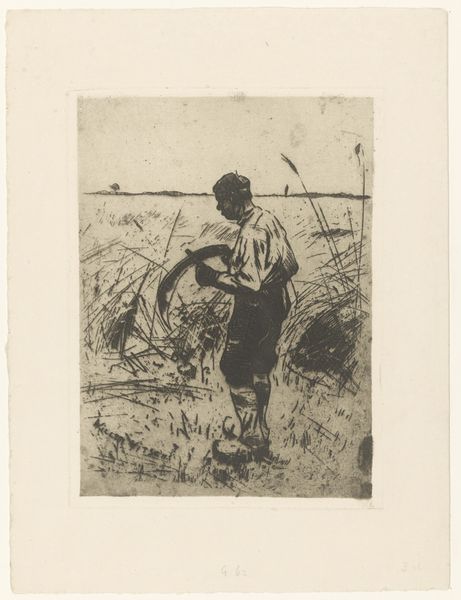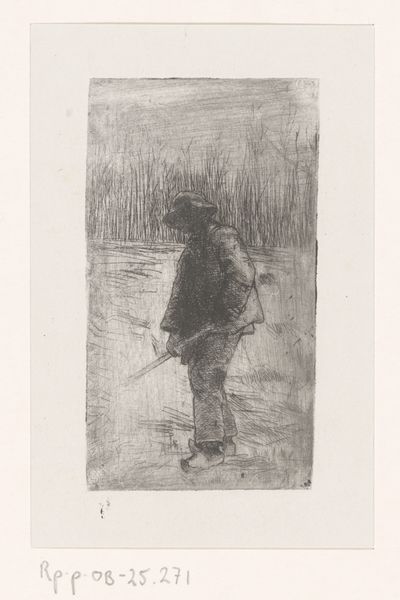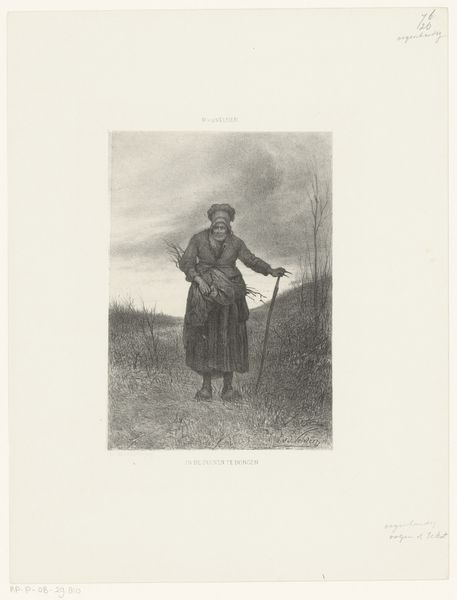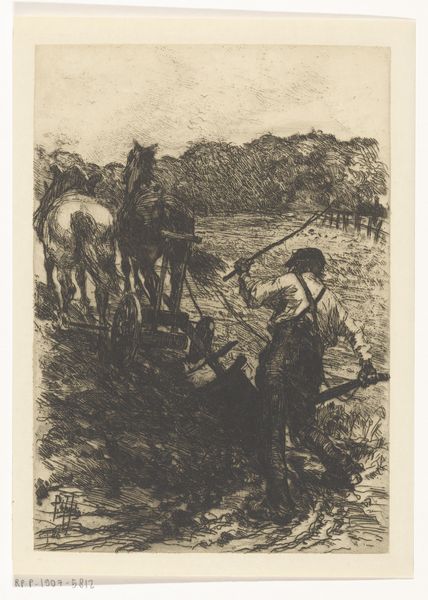
drawing, pencil
#
pencil drawn
#
drawing
#
light pencil work
#
pencil sketch
#
landscape
#
figuration
#
pencil drawing
#
pencil
#
pencil work
#
genre-painting
#
academic-art
#
realism
Dimensions: height 505 mm, width 405 mm
Copyright: Rijks Museum: Open Domain
Editor: Here we have Matthijs Maris’ "The Sower, after Millet," from around 1881 or 1882. It’s a pencil drawing of a figure sowing seeds in a field, with some blurry figures in the distance. There's a definite somber, almost melancholic feeling about it. How do you interpret this work? Curator: The drawing immediately evokes the precarious position of the rural worker, a theme Millet also explored. Consider the weight of the historical context: late 19th-century Europe, marked by industrialization and widespread rural poverty. This image isn't just about agriculture; it's a statement about class and labor. The sower becomes a symbol of resilience. How does Maris’ work speak to ongoing struggles for social justice and the rights of laborers today? Editor: That's a very powerful reading! I hadn’t considered the social commentary so explicitly. The way the figure is almost obscured by the shadows does speak to a certain marginalization. Curator: Exactly. And think about the “after Millet” in the title. It's not simply imitation, but a deliberate act of engaging with an artistic lineage known for depicting peasant life. Maris reinterprets Millet through his own lens, perhaps highlighting a more introspective, psychological dimension of labor. What effect do you think Maris was trying to accomplish? Editor: Maybe Maris was interested in the psychological toll of relentless work, something more internal than a simple depiction of labor. It definitely feels less romanticized than some rural scenes. Curator: Precisely! It forces us to confront uncomfortable realities and question the power dynamics embedded within seemingly simple pastoral imagery. The drawing prompts us to consider the dignity, yet also the precarity, of the worker's existence. Editor: I see it in a completely different light now. It’s not just a scene of sowing, it's a commentary on society. Curator: Art allows us to look at past through different perspectives. Let's consider its future together!
Comments
rijksmuseum about 2 years ago
⋮
Maris took up etching again after twenty years, around 1880. His objective was to make a reproduction of the famous painting The Sower of 1850 by the French artist Jean-François Millet. Maris saw the effort it had taken Millet to create this masterpiece reflected in the farmer’s slow gesture. Good art, so he believed, must issue from its maker. He immediately reaped praise with this large, detailed etching.
Join the conversation
Join millions of artists and users on Artera today and experience the ultimate creative platform.
